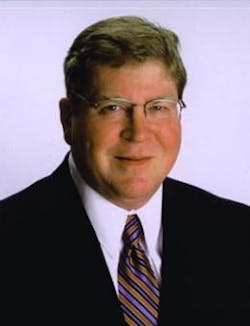The Department of Energy on Overdrive
The Air-Conditioning, Heating & Refrigeration Institute has both filed petitions for reconsideration and filed suit against the Department of Energy for its proposed rules on walk-in coolers and freezers and commercial refrigeration equipment. AHRI and all other HVACR practitioners are in favor of energy efficiency, but DOE’s proposed rules are overreaching and may actually fail to increase efficiency. Refrigeration users may repair their old units rather than buying more efficient but too expensive new equipment.
AHRI filed a petition for review in the U.S. Court of Appeals for the 5th Circuit of DOE’s final rule issued on June 3, 2014, regarding energy conservation standards for commercial walk-in coolers and freezers. Prior to this petition for judicial review, AHRI submitted a petition to DOE for reconsideration under the Administrative Procedures Act, requesting that the agency correct errors in the final rule.
In the final rule, DOE set efficiency levels above the agency’s own determination of what the maximum technology is for some types of this equipment.
The rule establishes minimum energy efficiency standards expressed in terms of annual walk-in energy factor for various equipment classes, which will significantly impact manufacturers and consumers of this equipment. In the final rule, DOE set efficiency levels above the agency’s own determination of what the maximum technology is for some types of this equipment.
AHRI also filed a petition for review in the U.S. Court of Appeals for the Seventh Circuit against DOE in response to its final rule issued on March 28, 2014, regarding energy conservation standards for commercial refrigeration equipment. The rule, which updates standards set by DOE in 2009, includes maximum daily energy consumption values as a function of either refrigerated volume or total display area for various equipment classes. The efficiency levels in the final rule are not economically justified and technologically feasible, in direct violation of the core principle of the Energy Policy and Conservation Act, said AHRI President and CEO Stephen Yurek.
The rule, which updates standards set by DOE in 2009, includes maximum daily energy consumption values as a function of either refrigerated volume or total display area for various equipment classes. The efficiency levels in the final rule are not economically justified and technologically feasible . . .
AHRI sued in federal court, Yurek told E&E TV interviewer Monica Trauzzi, because DOE might not be legally able to lower efficiency goals once it has issued a final rule. (Washington, D.C.-based Energy & Environment Daily is a publication aimed at policy makers.)
I remember the time when AHRI and DOE collaborated. Back in the day, DOE would simply adopt AHRI standards and test methods because they worked. AHRI member companies are full of smart engineers who have been doing this work for years. It’s science. Now, however, DOE seems to have lost control of itself.
EPCA gave DOE the authority to regulate energy use of HVACR equipment following the energy crisis in the late 1970s, but the rules must be economically justified and technologically feasible. In the video interview, Trauzzi asked Yurek if the technology existed, and his answer was, no.
“In looking at commercial refrigeration there were over 40 product categories that they were regulating and setting standards for, and for some of those they finally adopted efficiency levels that were above Energy Star levels. Usually Energy Star is at top of the line and the EPA and DOE are trying to push consumers to buy those products, the highest efficient products. But even in some of those product categories, equipment today doesn’t exist that could meet the efficiency levels adopted by DOE,” Yurek said.
The impetus for these regulations is President Obama’s Climate Action Plan. DOE plans on issuing 13 new regulations in the next two years in an attempt to cram in as many energy efficiency rulemakings as it can in the time it has left. For example, new regulations for split system and packaged heat pumps and air conditioners go into effect next month, January 2015. Despite the latest rules not having gone into effect, on November 4 DOE issued a Notice of Proposed Rulemaking seeking input on what will be, no doubt, even more stringent efficiency standards.
Contractor associations (and some manufacturers: see this contributed article by Danfoss) are constantly preaching about the importance of political action. This is why. Energy efficiency is desirable, but this kind of regulatory frenzy needs to be reined in by those in Congress who believe in limited government.


